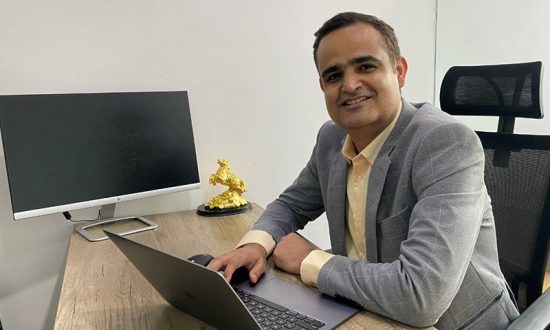Vijay Kumar Sharma is Optoma Corporations’ Country Head for India. He leads the team ensuring top-of-the class delivery to develop, implement and achieve the company’s mission, vision and goals. A seasoned Business Management professional, Vijay develops Optoma’s India strategies to boost company’s prospects and ensure holistic support to relevant parties/people in the value chain. With an experience of over 15 years, Vijay has donned various hats successfully during his professional journey. Vijay is an MBA with specialization in marketing from Pune University.
Interactive Flat Panel’s (IFP) contribution to education can be regarded as one of the extraordinary changes in how educators are imparting knowledge and how students learn. These in many ways replace the Blackboards and Smart Boards with a single integrated product. Some of the biggest advantages of Interactive Flat Panels are versatility, interactivity, ease of use, flexibility and variety of tools to help both teachers and students alike. In today’s interconnected world teachers can share the work of classroom and assignments with just a click of button. Similarly, students can respond and share their assignments all without connecting even a single wire.
Interactive Flat Panel Displays (IFPDs) bring lessons and idea sharing to life in both education and business settings, whether its lecture hall or institute’s meeting room or labs, these are helpful in each of the settings. Available in multiple sizes and featuring some of the latest technologies like anti-glare / scratch-resistant glass, low blue light filter (TUV certified low blue light content) and a wide viewing angle, these reduce eye strain while providing crisp and vivid visuals to every seat in the room and thus becoming a necessity for every classroom in today’s Hybrid learning environment.
Some of the modern value enhancements which can be provided with help of Interactive Flat Panel to enhance hybrid learning include:
- Lessons can be prepared by teachers which integrate with the material across platforms and software.
- Students participate in the class and this interactivity can be recorded for sharing with all and for later
- Real-time building upon content which teacher has prepared
- File Manager Software allows users to manage files and folders. Users can also access cloud drives, browse, create, rename, copy, move and delete files.
- Creative sharing is easy with a ready-to-use whiteboard, featuring built-in annotation tools that encourage collaboration and display engaging graphics, videos, animations and any other type of media.
When used by teachers these tools create an eager and engaging classroom. It has been found by many studies that engagement methodology is easy and provokes students when combined with an Interactive Flat Panel.
From the perspective of clarity, IFP panels are way ahead of any of the previous technologies. These have an optimized viewing angle, making it convenient for the large classroom. The screen can be visible clearly from any corner without any problem making it suitable for a class full of dozen students or even more. The pixel density and the display come with ultra-low blue light, making it eye-friendly. Hence, continuous viewing does not cause eye-hazards as compared to previous technologies.
Usability is another factor due to which it has become so popular. This is helpful in giving a personal touch to the class by explaining things with the handwriting while displaying relevant study material on the screen. This is more convenient than using a regular blackboard or whiteboard. Moreover, the touch screen and writing features allow teachers to perform group activities in the class, thus making IFP a great tool for collaborative learning. This in turn makes the classroom management easier. Any teacher can vouch if a community can be built in a class, half of the work is done.
The traditional smart classrooms suffered with the technical impediment of brightness issues in open window environment. The projectors were limited to a certain brightness and thus could be used effectively in closed curtains. Also, traditional projectors were lamp-based with 3000~4000 hours of life span. Subsequent dullness impacts the quality of visuals leading to the disinterest of students in the content. Interactive Flat Panel takes care of all such problems and provide a long-lasting solution that is very easy to maintain over the long run.
Ease of use is another factor that adds to the overall superiority of IFP’s over traditional smart classroom equipment. Despite being loaded with a lot of functionalities and features, it is still easy and straightforward to use. Students and teachers who are not tech geniuses or have good practice of using gadgets can also use IFPs effectively without having to worry about it. With the feature of connectivity to wireless internet, Bluetooth, and the smooth navigation system for use, it gets very handy in classroom activities. Large Interactive flat panels help students focus on their studies, brainstorming, discussions, and feedback can be more effective and efficient while using Large interactive display screens.
To summarise, it has been found that Interactive Flat Panels (IFP) are increasingly gaining more acceptance by educational institutes. Teachers are rapidly & easily adopting this emerging technology to make it an integrated part of their teaching experience. The IFP provides educators and instructors tools and features that make learning more attractive by making it straightforward, enjoyable, and easy for the students.




